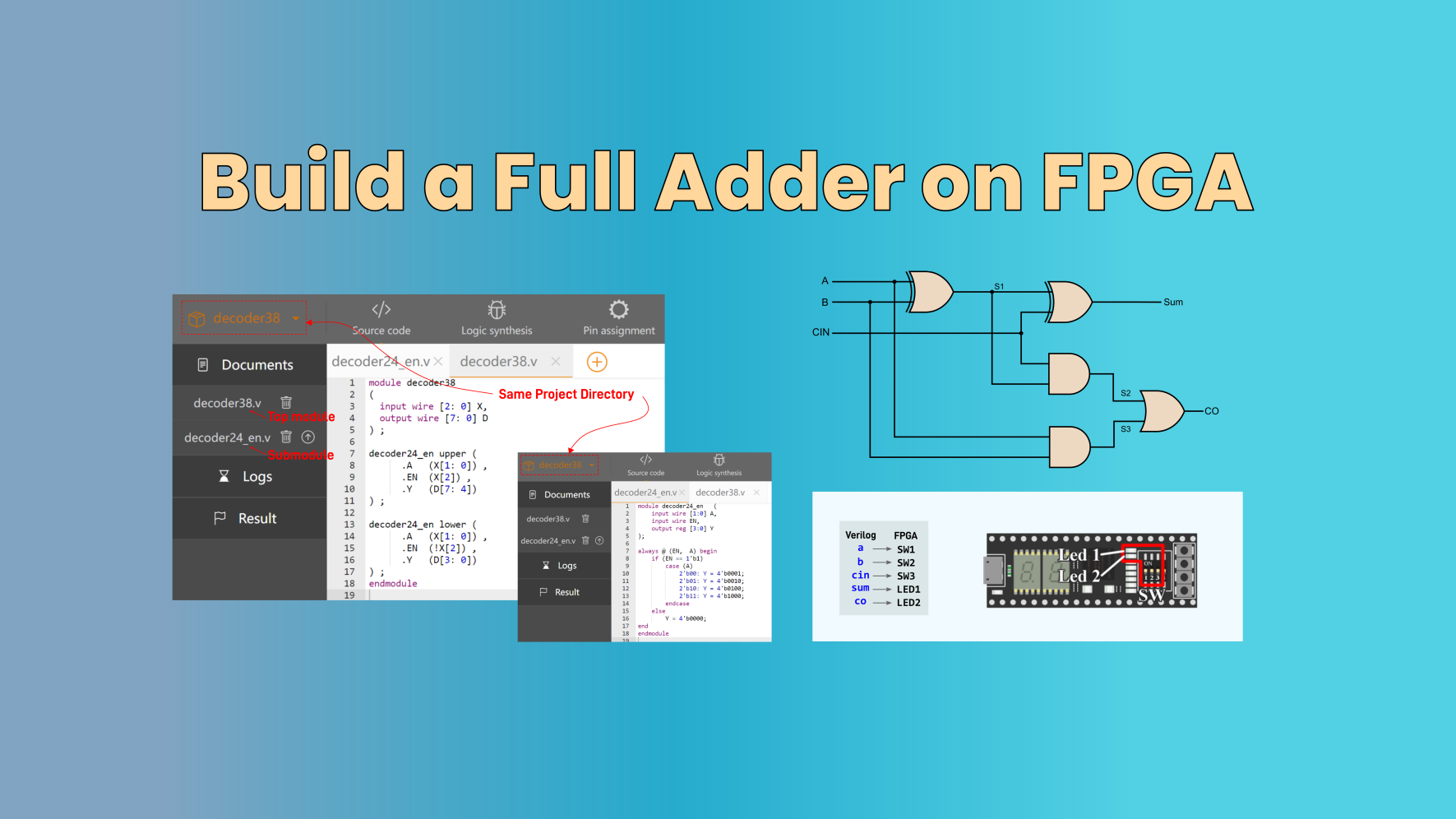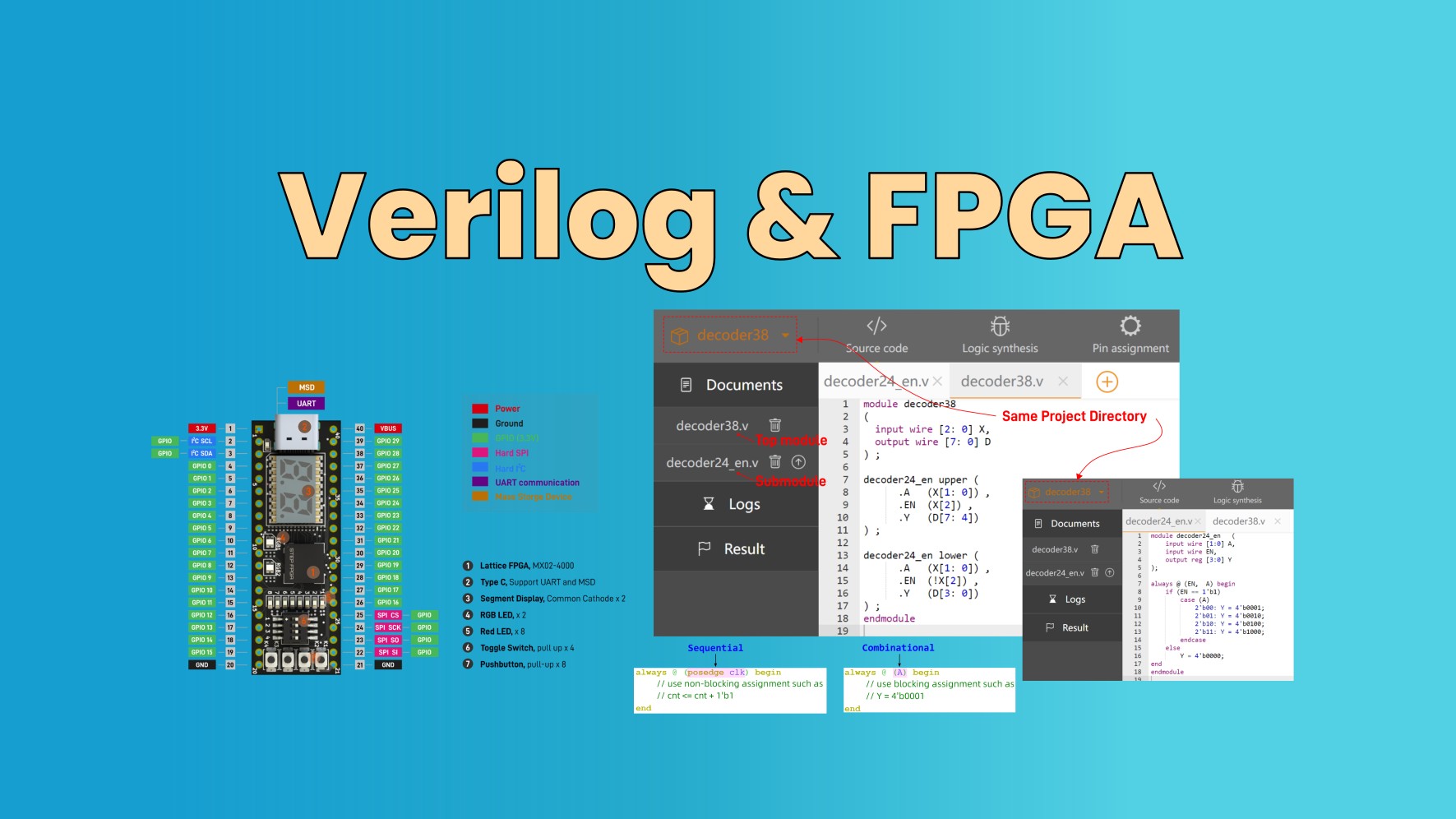In the ever-evolving landscape of digital electronics, one technology stands out as a true champion of adaptability and innovation—Field-Programmable Gate Arrays, or FPGAs. Imagine a world where the very hardware powering your digital creations can be molded and reshaped like digital clay, adapting to the unique demands of your applications. Welcome to the realm of FPGAs, where the boundaries of traditional fixed-function integrated circuits are replaced with the limitless potential of reconfigurable hardware.
This blog explores the fascinating universe of FPGAs, delving into the intricacies of these programmable wonders and uncovering the myriad possibilities they offer to engineers, developers, and innovators.
Whether you're a seasoned hardware engineer seeking to harness the full potential of FPGAs or a curious newcomer eager to understand the magic behind these programmable chips.
What is a Field Programmable Gate Array (FPGA)?
FPGA meaning - An FPGA, or Field-Programmable Gate Array, is a digital integrated circuit that can be reprogrammed to perform a variety of tasks.
It consists of arrays of logic gates and memory cells that can be interconnected in customizable ways, allowing designers to implement specific functions or computational tasks directly on the hardware. Think of FPGAs as digital LEGOs: just as you can reassemble LEGO blocks to create various structures, you can rearrange FPGA's building blocks to form anything from simple logic gates to complex digital systems.
Understanding what's inside FPGA structure looks like
How to learn FPGA
One major challenge for beginners to start learning FPGAs is that most FPGA development boards and courses are designed for advanced users. Beginners often find extremely challenging or simply get lost when dealing with all sorts of hardware configurations and environmental setup for the boards. Hardware aside, these boards usually come with sophisticated software development tools. For those just started with FPGAs, navigating these tools can feel like deciphering a foreign language. The interfaces are often cluttered with advanced features and options, which, while powerful, can be overwhelming for novices.
To learn FPGA can be a complex tasks as its architecture is different but we have made easy like writing the the first "HELLO WORLD" C++ code. We have designed the FPGA board and its tutorial is such a way that a person having basic understanding of logic gates can deeper into digital circuit design and FPGA technology.
The extensive 200-page tutorial is replete with illustrative examples, codes, experiments, and projects. The course hardware kit includes with our unique STEPFPGA featured as "the most user-friendly board for beginners' ', and a comprehensive kit with assortment of components, sensors, and motors, which offers learners a tangible and engaging "learn-by-doing" experience.
Learning Objective offered by FPGA Board & FPGA Tutorial
- Tangible Learning: Understand the fundamental concepts of digital circuits through tangible experiments and projects with this beginner-friendly FPGA board.
- Practical Application: Transition from theory to real-world applications, learning how to design and implement various modules such as encoders, decoders, counters... in a digital system.
- Digital Design Practice: Perceive the entire digital design process and mindset, from basic logic gates to practical modules to interface with sensors and actuators.
- Engaging Project: Consolidate your acquired knowledge and skills by undertaking a capstone digital piano project, incorporating advanced techniques related to signals and DDS.
Who can learn FPGA with our kit
- Students who completed our prior courses and seeking to expand knowledge of digital circuits
- Individuals with basic prior knowledge of logic operations or computer basics
- Arduino or microcontroller players who heard of FPGAs and want to have a test drive
- Students preparing for computer architecture and digital design in university curriculum
Where to buy FPGA Board / FPGA Programming Board?
***Check the STEPFPGA board by EIM Technology***
https://shop.eimtechnology.com/products/step-fpga-development-board
What's the FPGA Programming Software used
We have used the easy to use online tool WEDIDE. You have permanent free access to this WEB browser-based IDE tool to develop the board.
FPGA Learning DEMO Videos:
Demo video 1:
Demo video 2:
FAQs related to FPGA
-
What does FPGA stand for?
FPGA stands for Field Programmable Gate Arrays (FPGAs). They are termed 'field programmable' as they grant users the capability to modify the hardware to as required after its manufactured.
-
What is FPGA and why it is used?
A field-programmable gate array (FPGA) is an integrated circuit characterized by its capability to be programmed or reprogrammed post-manufacturing. It comprises numerous fundamental components known as Look-Up Tables (LUTs) and Flip-flops, enabling the design of both combinatorial and sequential circuits. Additionally, FPGA incorporates specialized hardware resources such as multipliers, memory blocks, and DSP blocks.
-
What is the difference between PLC and FPGA?
The difference between FPGAs and CPLDs is that FPGAs are internally based on look-up tables (LUTs). A PLC uses complex macro cells that include storage elements (flip flops) to internally store state, and implement state machines.
-
How much does a Field Programmable Gate Array cost?
There are various fpga boards but the best in the market is one by EIM Technology as it's designed keeping the learning aspect high rather than selling as a good. STEPFPGA Development Board by EIM Technology will cost you approximately CAD 80.00
Explore it - https://shop.eimtechnology.com/collections/all-products/products/step-fpga-development-board
-
Why are field programmable gate array important?
FPGAs are extremely versatile. They allow developers to test any number of variables after the board is built
-
How does an FPGA work?
To know more about how FPGAs work read our resource for same. We have tried to make easier for everyone to learn the working and programming of FPGA via our learning module and tutorials which have very systematically organised the experiments to learn FPGA.
Link to the resource> https://doc.eimtechnology.com/electronics-engineering/04-digital-circuits-and-fpga
-
What does an FPGA do?
Engineers use FPGAs to create specialized integrated circuits. FPGAs comprise D flip-flops, Boolean logic, and an interconnected wiring network, enabling the creation of state machines for diverse functionalities.
- What is fpga board?
Field Programmable Gate Arrays (FPGAs) are advanced integrated circuits readily available for purchase as pre-assembled products. These versatile devices are labeled 'field programmable' due to their unique capacity, allowing users to dynamically reconfigure the hardware to suit specific use case requirements even after the completion of the manufacturing process. This adaptability is a key advantage, facilitating customization for a wide array of applications, including signal processing, cryptography, and artificial intelligence. FPGAs boast a modular architecture consisting of programmable logic blocks, interconnects, and dedicated resources such as memory blocks and digital signal processing (DSP) units, contributing to their reputation as powerful tools for hardware acceleration and rapid prototyping in diverse technological domains.
-
How to learn FPGA?
To learn FPGA can be something which can add value to the one's programming skills and building electronics kits. We have designed a tutorial guide and programming manual with our STEPFPGA board.
To shop STEPFPGA visit https://shop.eimtechnology.com/products/step-fpga-development-board
-
Why fpga is better than microcontroller?
Major reason that wins FPGA over a microcontroller is that FPGAs allow for parallel processes, you can implement more inputs with an FPGA than with a microcontroller, without running into a bottlenecking issue.
There few more advantages of FPGA over a microcontroller
- No changes are required in hardware to reprogram a FPGA
- With an FPGA, it's possible to create a microcontroller architecture, its impossible to do vice versa.
- an FPGA allows for greater customization and more complex processes,
- FPGAs are more suitable for applications requiring higher processing speeds or power.
- FPGAs have the ability of parallel processing. This is the ability to simultaneously execute many identical operations.
- FPGAs are often employed in applications demanding high-throughput and low-latency processing, such as signal processing, image and video processing, and certain artificial intelligence tasks
-
Why use FPGA instead of CPU?
FPGA and GPU processors can perform AI algorithms significantly faster than a CPU. This implies that an AI application or neural network will learn and respond several times more swiftly on an FPGA or GPU in comparison to a CPU.

